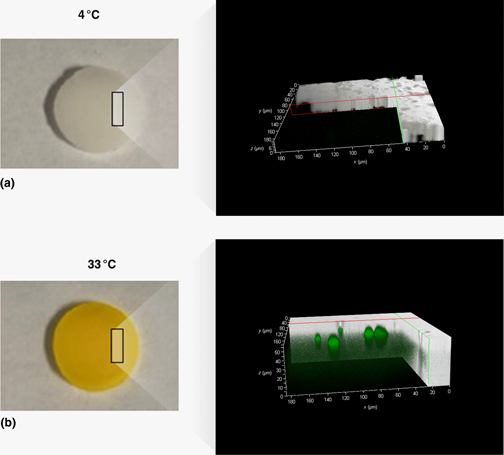Article contents
Loading and release of a model high-molecular-weight protein from temperature-sensitive micro-structured hydrogels
Published online by Cambridge University Press: 28 June 2019
Abstract

The authors prepared a micro-structured, thermosensitive hydrogel with N-isopropylacrylamide microgels with a lower critical solution temperature (LCST) of 32 °C dispersed on a matrix of N-isopropylacrylamide-co-dimethylacrylamide with an LCST at 40 °C. Incubation of the hydrogel at 33 °C in a solution of fluorescein-albumin induced loading of the protein. The protein was not loaded at a temperature below the LCST of the microgels (4 °C), suggesting that the shrinkage of the microgels followed by the formation of micropores within the hydrogel matrix is a prerequisite for protein loading. A sustained and complete release of the loaded protein was obtained at 37 °C.
- Type
- Research Letters
- Information
- Copyright
- Copyright © Materials Research Society 2019
References
- 3
- Cited by


